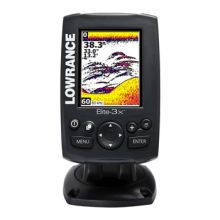
As a reminder, the cone angle determines the coverage, or footprint seen by the fish finder. A wider cone angle means that the fish finder will see more of the bottom.
For me, this is important because I do tend to fish shallower areas from a fishing kayak or a canoe. Why have a fish finder if it will only see a few inches of bottom coverage (narrow cone angle).
Choosing My Best Fish Finder
In my area, the water is mostly brackish, or tannin stained, or I just cannot see the bottom.
I did an earlier post showing a chart I had created for fish finder transducer cone angles, the depth, and what the bottom coverage or footprint was. I have added more angles based on Lowrance, Humminbird, and Garmin products I have looked at and will post this new information soon.
Lowrance and Humminbird have different ways of measuring their transducer cone angles. There is no real standard of doing so. I could not find much in the way of the Garmin product specifications.
The Lowrance product information uses -3 decibels, or db, to determine their fish finder cone angle. This measurement means that the sonar signal strength, as measured from the center, had dropped off by half. The -3 db is more or less a standard that you see on in a lot of electronic products to measure signal strength.
Humminbird uses -10 decibels, or db as their measure. This means that sonar signal strength as measured from the center is only 1/10 of what it started with.
Both manufacturers say that the fish finders will see beyond the advertised cone angle.
So, what have I gathered from all of this?
Well these are my thoughts:
- The Lowrance product has a stronger sonar signal with the transducer cone area (-3 db versus -10 db)
- With the Lowrance product, I have a choice of 22 or 52 degree cone angles
- The Humminbird product has a higher transmit power (my thoughts, –this means less battery life on the water)
- The Humminbird had a choice of either 16 or 28 degree cone angle
I could not find anything on the receiver sensitivity for any of the models.
Please comment if I have any of this wrong?
In the end, I chose the Lowrance product as my best fish finder. It would be awesome to do a side-by-side, on the water comparison of all these products.
Since I am using my own hard-earned-cash, I can only pick the one I believe fits my needs the best after doing the research of the product information that I can easily find.
Your needs are probably different and you may find a different product as your best fish finder.
My next project is to make this into a portable unit that I can either have in the canoe, my fishing kayak, or just leave it at home. I will do future posts on this project as well as my on-the-water experience with this fish finder.
Lastly, I do have a background in electronics, including receivers, transmitters, and antennas. So I do understand that techie stuff found in the back of those product manuals.

One reply on “Choosing My Best Fish Finder”
Yes! Finally something about Best Fish Finder.